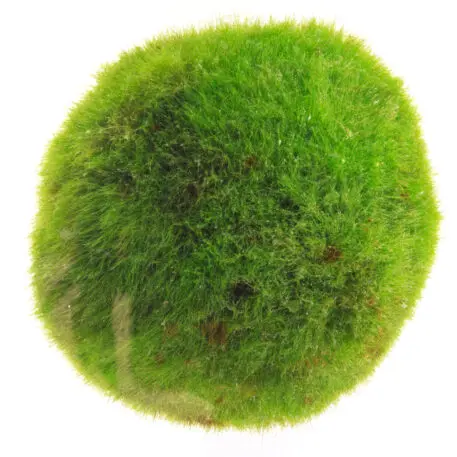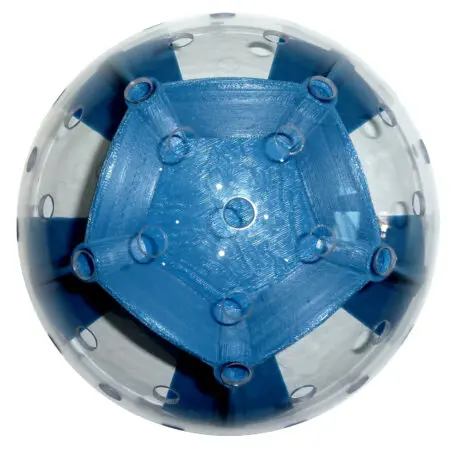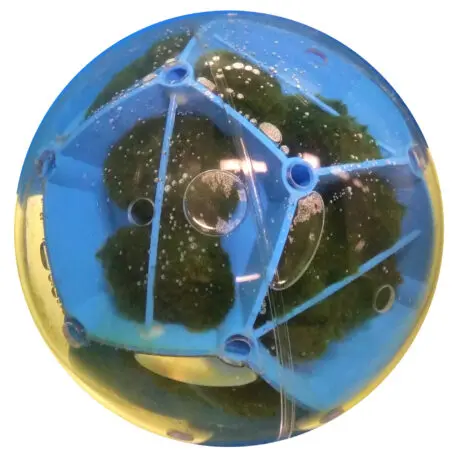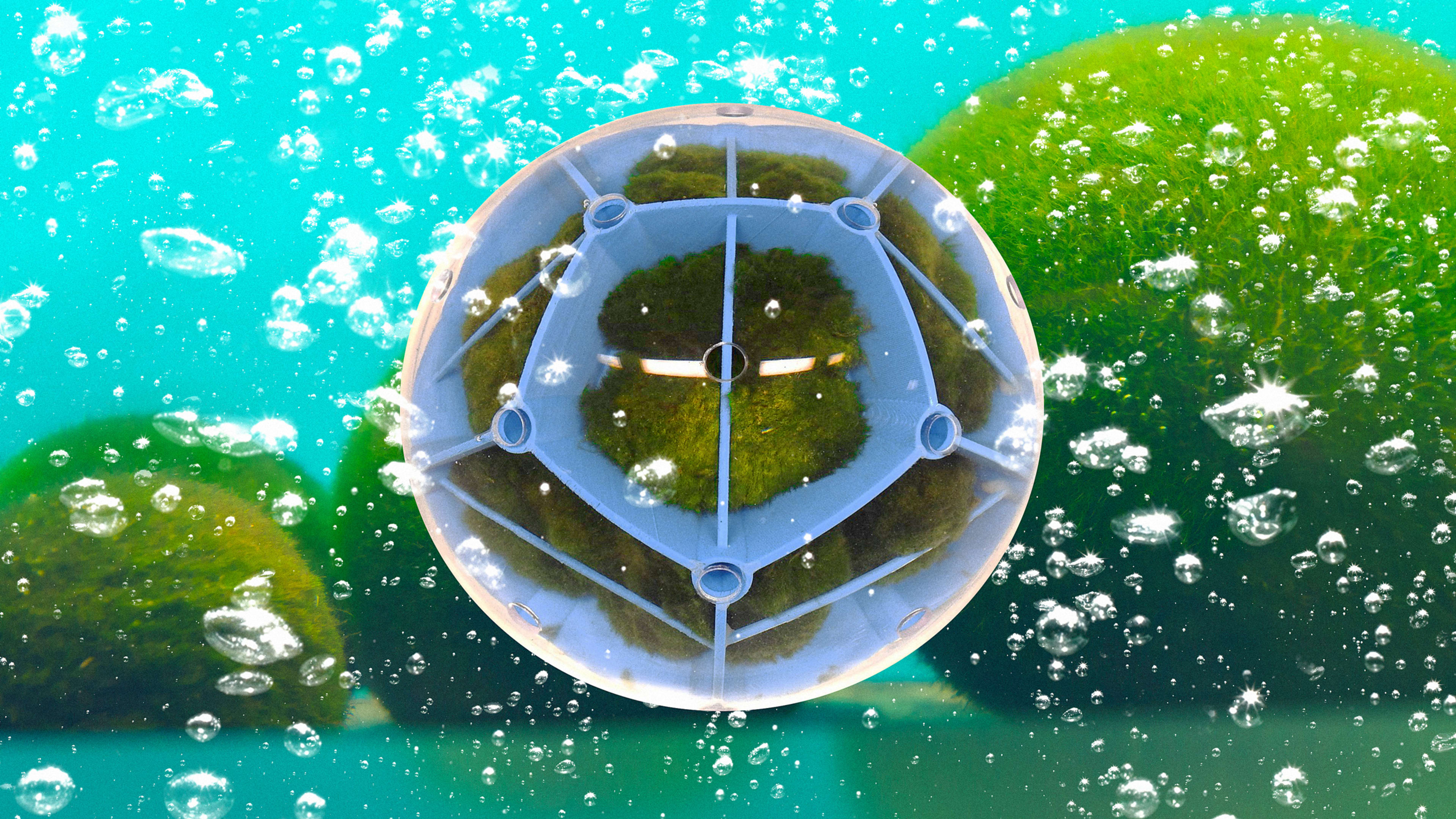Marimo are one of nature’s most alien spectacles. They are impossible-looking spheres made of algae, smoothed and toppled by currents in lakes, piling up on the floor like green puff balls. Marimo’s spherical form is what makes them so unique. Otherwise, sipping on faint sunlight beneath the water’s surface, they burp oxygen into our atmosphere just like any other plant.


As Neil Philips, UWE senior research fellow and first author on the paper, explains, the team fit marimo into a 3D-printed exoskeleton that’s roughly the size of a baseball. As marimo produce energy from sunlight, they exhale oxygen. Normally, this oxygen would simply float to the top of the water’s surface. But inside MARS, that oxygen bubbles up to get trapped inside a cage.
The pressure of these bubbles hits the cage in such a way that they create torque, zigzagging the MARS forward much like a hamster ball. In essence, this exoskeleton transforms marimo photosynthesis into fuel for its own propulsion across a lake floor. If the MARS encounters something too large to pass, the oxygen bubbles simply build up inside the suit. When enough oxygen is exhaled, the ball will actually become buoyant, floating over the object like an inflatable pool toy. As soon as the ball rotates, the oxygen naturally makes its way out of openings designed into the sphere, dropping it back down to the floor to continue on its journey.

[Photo: Neil Phillips/Unconventional Computing Lab]So what good can these slow-moving balls underneath a lake be? MARS can be loaded with all sorts of low-powered sensors to gather environmental data in situ (we have underwater sensors capable of measuring salinity, turbidity, pH, pollution, and more). He imagines these sensors could either be powered by a battery themselves, or actually use the motion of the ball itself to generate energy for full self-sufficiency. Philips also says that their printable, self-powered, maintenance-free construction makes them far more reliable and lower-cost than any complicated alternative.
Of course, the MARS design does propose that we voluntarily place more plastic into our waterways. Philips notes that this plastic is still of far lower environmental impact than building a more typical drone would be, and it could biodegrade over time. Plus, it’s hard to imagine any machine that could last as long as a MARS ball because the system has no moving parts, and its “battery” might last centuries: The oldest living marimo is over 200 years old.
In the future, the team would like to attempt to retrofit the design for sea water. Philips suggests that seaweed could be swapped in for the marimo, making the design work in the world’s oceans along with its lakes.
Recognize your brand’s excellence by applying to this year’s Brands That Matter Awards before the early-rate deadline, May 3.
